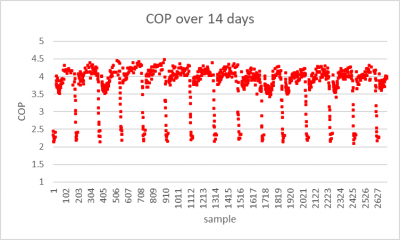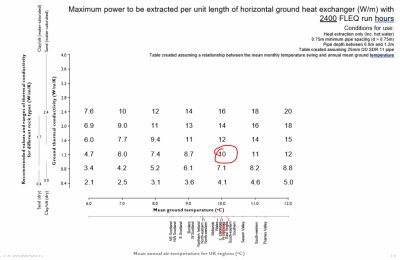Home Alone with Home Assistant (previously A Beginner's Guide to ASHP Monitoring)
Posted by: @cathoderayI think this will do the job:
I was looking at these from bellflowsystems they are uk based company. interesting definition of the word budget - cheapest of 650 - but its probably taken in an industrial context.
the notable thing is they look exactly the same as that chinese one. I wonder if its a cheap knock-off copy? this guy on youtube is using one to hack a pump with some DIY PWM (0min 57 sec)
same thing on aliexpress - (thought it was lots cheaper, but that was just the pipe sensor)
My octopus signup link https://share.octopus.energy/ebony-deer-230
210m2 house, Samsung 16kw Gen6 ASHP Self installed: Single circulation loop , PWM modulating pump.
My public ASHP stats: https://heatpumpmonitor.org/system/view?id=45
11.9kWp of PV
41kWh of Battery storage (3x Powerwall 2)
2x BEVs
This truly is a fascinating thread. Would it possible for you guys to keep a running tally to see what it ends up costing? That would be of interest.
Get a copy of The Ultimate Guide to Heat Pumps
Subscribe and follow our YouTube channel!
Posted by: @iancalderbankI was looking at these from bellflowsystems they are uk based company. interesting definition of the word budget - cheapest of 650 - but its probably taken in an industrial context.
the notable thing is they look exactly the same as that chinese one. I wonder if its a cheap knock-off copy? this guy on youtube is using one to hack a pump with some DIY PWM (0min 57 sec)
same thing on aliexpress - (thought it was lots cheaper, but that was just the pipe sensor)
I saw those Bellflowsystems units and had the same thought - they look identical, apart from the colour. Sometimes the 'development' is the other way, instead of the Chinese producing a cheap knock off copy, the 'Western World' company brands a Chinese product and doubles or trebles the price. The thing in the box is the same, you are just paying three times as much to get (a) a Western brand and (b) a chap in an office who speaks your language when something goes wrong (and good luck with that when it happens).
There's currently a Bellflowsystems bare 'head' unit on ebay for £100, no sensors. I haven't been able to determine the real world cost of the clamp on sensors, but my guess is getting them will double or treble the price. There are various other complete systems at a similar or a bit higher price, but they are all invasive ie you need to drain down the system to cut and insert the flow sensor into the pipework. I also continue to have concerns about the extent to which these inline sensors are themselves an obstruction to flow. Photos looking down the inside of the sensors does not inspire confidence in free flow. They also tend to be narrower bore, typical 'DN' (nominal diameter) 20mm vs 28mm pipework in the house.
That listing on aliexpress is cheaper, by quite a lot, if you select Host with TS-2 (host is the blue box, TS-2 is the DN50-100mm sensor) it comes out at £101.84 plus £12.98 shipping, vs £159.95 all in for the ebay one. If I could find one for under £100 all in, I think I would probably consider it worth the punt... I am a natural tight wad.
That you tube video about hacking a Grundfos pump is very interesting. I am not sure he is using the flow meter to do the hacking, I think it may just be there to show the hacking works, ie it displays the changing flow rate. It also confirms the very simple installation, just the two clamp on sensors, and the display readout does look credible, though of course it might be inaccurate. That's why I am thinking of using one of there flow meters to verify the Midea controller flow rate read out, (and vice versa) before setting it up permanently on the secondary circuit. Directly measuring heat energy in both the primary and secondary circuits offers the tantalising possibility of getting a definitive answer to whether the PHE is, for want of a better term, a heat thief.
Posted by: @editorWould it possible for you guys to keep a running tally to see what it ends up costing?
So far, I am pleased to say I haven't spent a penny, just rather too many hours of my time. Keeping costs down is one of my core objectives, so I will be watching what I spend carefully, and will certainly add the costs to posts as I travel the long long road with many a winding turn that leads to who knows where...
Midea 14kW (for now...) ASHP heating both building and DHW
Our heatpump has been going for 13 months, used 1580kWh of electricity, and produced 5803kWh of heat. Most of that is heating the (4 bed 1963 build) house, some is DHW. It doesn't use a lot of electricity, because we have a lot of insulation - walls are now U=0.15, etc. Almost at Enerphit (retrofit passive) level - I'd like to get there, but I think we would need to dig up the concrete floor and insulate it, and Mrs RobL is not happy about that. I think I'm happy to be stopped on that one! We have "perimeter wall" insulation instead - not as good, but far less disruptive.
Anyway... I've just pulled out the January data, and made some graphs out of it with excel, all a bit manual I'm afraid. I'm sure a commercial system would do this bit for free!
This first graph just shows the COP versus samples. It's over about 2 weeks, the plunge in COP is every time DHW is heated - it's timed to be in the Octopus Go cheapslot, so it's a daily occurance:
This graph shows COP versus deltaT. I've colour coded it - the blue is DHW, slowly heating up the tank - starting from a great COP, but dropping as it struggles to do the last few degrees. The coil in the hot water tank is not a very large area, so the water itself only gets to 46C (except for a weekly immersion timer). Orange shows the home heating, a more consistent splodge of colour.
Our COP average over the year, including pumps etc is 3.67. Interestingly, the last 2 weeks have been lower, at 3.25. Surprisingly the system has a better COP when it's colder weather ... this counterintuitive result is because it's heating the house a greater proportion of the time, rather than mostly hot water.
Cheers, I’ve obsessively been insulating for years, I need a new hobby!
It’s actually LWT-Tgroundwater. Not that it makes a huge difference - the ground is around 6C now, and it quickly chills down further after running for an hour. What the. heat pump actually gets is close to 0C most of the time. It has glycol, so it’s ok down to -10C.
Posted by: @roblCheers, I’ve obsessively been insulating for years, I need a new hobby!
It’s actually LWT-Tgroundwater. Not that it makes a huge difference - the ground is around 6C now, and it quickly chills down further after running for an hour. What the. heat pump actually gets is close to 0C most of the time. It has glycol, so it’s ok down to -10C.
Is it a GSHP by any chance?
Hi
230m doesn’t sound like a very big loop for a modern heatpump. I had a 300m loop in my garden and was told after a survey that I would need another 250m for the energy requirements due to new regulations set out by MCS.
in the winter, my brine coming into the house fell to around zero and I always wondered if my 300m loop was big enough. Summer was fine brine coming in 10-14 deg.
Our heatpump is tiny. It takes 1800W from the ground outside, using 600W of electricity. So that 1800W from outside over 200m (30m of pipes pass near other pipes) pulls 9W per metre from the ground. We went pretty much exactly on the mcs guidelines here:
When I measure the temperature, it's on out cold heatexchanger metalwork. I think this is up to 5 degrees colder than the glycol coming out of the ground. Maybe if we'd put 2x the pipes in the ground, and a bigger heatexchanger, we could use plain water without any glycol in it.
- 26 Forums
- 2,364 Topics
- 53.6 K Posts
- 184 Online
- 6,029 Members
Join Us!
Worth Watching
Latest Posts
-

How long will your energy contract last?
Some heat pump tariffs don’t run as long as a heat pu...
By Toodles , 10 hours ago
-

@morgan They are unsupervised these days, can’t get the...
By Toodles , 10 hours ago
-
-
RE: Octopus Cosy Heat Pump Owners & Discussion Thread
@kevh it's worth remembering that many lsvs only actual...
By JamesPa , 1 day ago
-

RE: Setback savings - fact or fiction?
Exactly. We only need to compare conditions, to decide ...
By cathodeRay , 2 days ago
-
RE: Balancing financial efficiency and comfort using the Octopus Cosy tariff
I found because I have very low heat loss I can set bac...
By RadWhisperer , 2 days ago
-
RE: Need Help Optimising My Rushed ECO4 Install: 12kW Bosch Heat Pump
Welcome @mickamills We too have an oversized 12kW Sa...
By Old_Scientist , 2 days ago
-
RE: My Powerwall 3 Consumes 3-4 kWh/Day in Self-Consumption: Is This Normal?
@caron I can confirm that the power usage of the PW3 is...
By Old_Scientist , 2 days ago
-
RE: Speedcomfort radiator fans
Thats true, but having tried (and succeeded) in constru...
By JamesPa , 2 days ago
-
RE: Solis S6-EH1P8K-L-PLUS – Why I Chose It and What I’ve Learned So Far
@bash brilliant, thanks for the feedback
By energy9165 , 2 days ago
-

RE: Heat Pump Heats the House… But It’s Not Cosy. Emitter Changes or System Tweak?
@alastair There I was, feeling grumpy, he said “Cheer u...
By Toodles , 2 days ago
-
RE: Grant Aerona: Is there a setting to keep the 2-port valve open during pump blockade
Depends on OAT. Mine cycles at OAT>10 and of course...
By JamesPa , 2 days ago
-
RE: New Fogstar 15.5kWh upright solution
@transparent My conclusion is as you have noted, tha...
By Bash , 2 days ago
-
RE: Mitsubishi Ecodan R290 10kW performance
And to you too. Wishing you a very enjoyable festive s...
By Sheriff Fatman , 2 days ago
-

RE: External pipework insulation
They do? But that isn't apparent from the photos we'r...
By Transparent , 3 days ago
-

RE: Say hello and introduce yourself
@velcro welcome to the forums. Please feel free start a...
By Mars , 3 days ago
-
Daikin EDLA11D3V3 DHW Settings
I have a newly installed EDLA11D3V3 which I'm still get...
By Velcro , 3 days ago
-
RE: Midea ASHP – how to set weather compensation
@curlykatie did you get sorted with this?
By MickaMills , 3 days ago
-
RE: MyVaillant Connect Regular Disconnect
Thanks. Yes, if the time is consistently 11pm every nig...
By buckwem , 4 days ago








